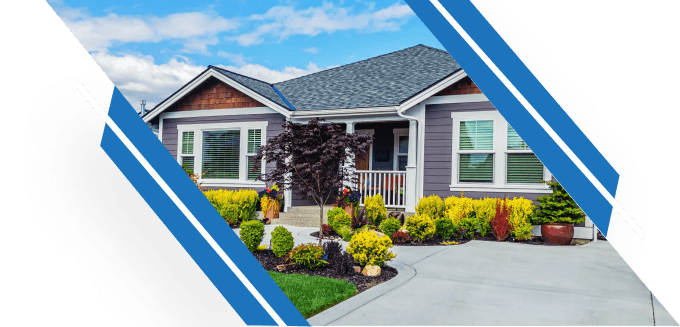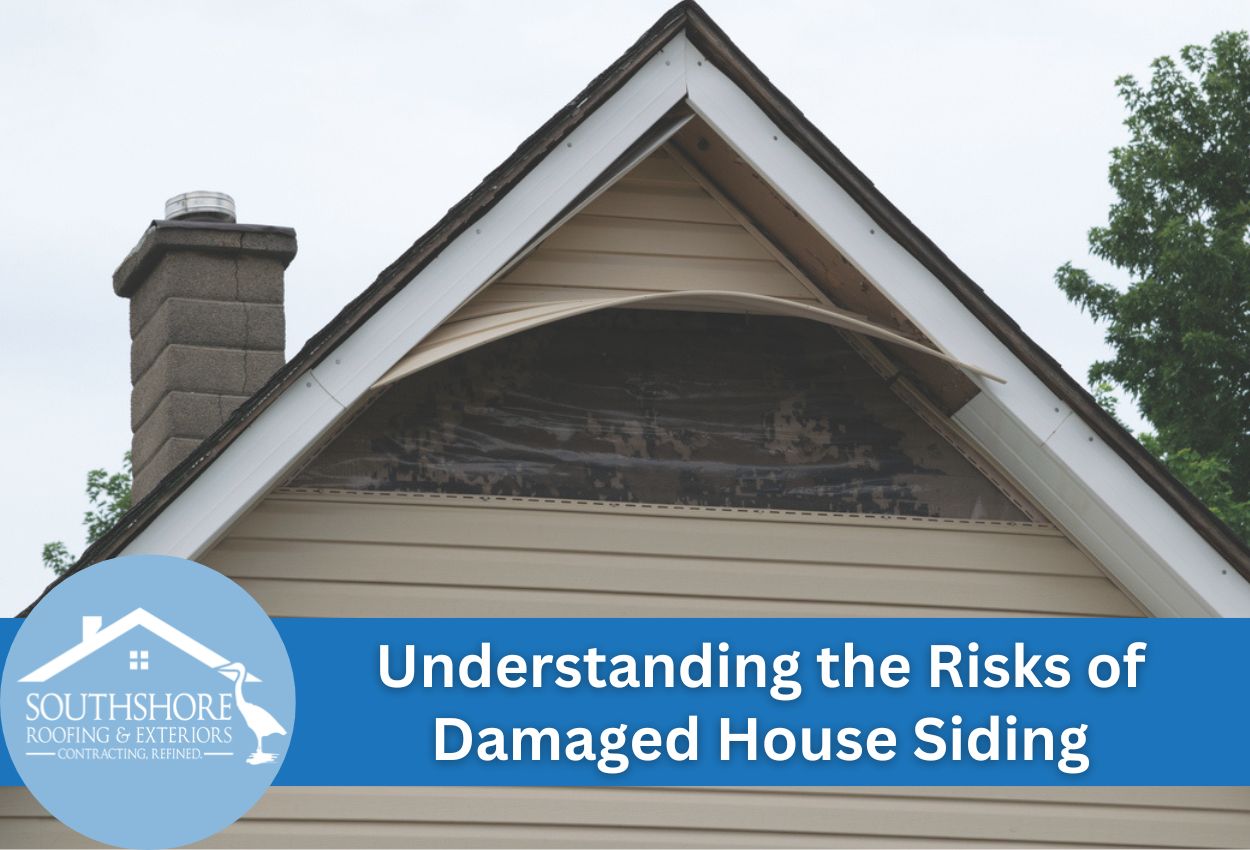Your home’s siding does more than give your house color and texture, it’s a protective barrier that shields your property from Florida’s extreme weather conditions. In Tampa, where homes face everything from intense UV radiation to hurricane-force winds and torrential downpours, intact siding plays a vital role in strengthening your home. When siding becomes damaged, it creates vulnerabilities that can lead to problems for your property.
Damaged siding often begins as a minor issue like a few cracked panels or loose sections but can quickly worsen into structural concerns. The primary purpose of siding is to prevent moisture infiltration, and when compromised, water can seep behind the damaged areas. This creates ideal conditions for wood rot, mold growth, and even foundation issues if water travels downward.
For Tampa homeowners, ignoring siding damage can be a costly mistake. The high humidity and frequent rain in the area amplify the risks associated with compromised siding. What might start as a small area of damage can spread and affect larger portions of your home’s structure. Understanding the problems that can follow siding damage helps homeowners recognize why immediate attention to these issues is essential for protecting their investment.
Common Signs of Siding Damage in Tampa Homes
Tampa’s weather conditions can take a toll on your home’s exterior. Recognizing siding damage early can save homeowners thousands in potential repairs. Visual indicators of deterioration include warping or buckling panels, which often result from exposure to Tampa’s intense heat and humidity. Cracked or split siding sections typically appear following storm impacts or natural aging, while bubbling or blistering suggests moisture has gotten behind the surface.
Color fading is common in Tampa homes due to our strong UV exposure, and while this might seem merely cosmetic, it indicates the siding is losing its protective properties. Beyond what you can see, other changes may signal hidden siding issues. A sudden increase in energy bills often points to compromised insulation resulting from siding failure. Indoor drafts, especially during storm season, frequently stem from gaps in exterior protection.
Pest infestations provide another warning sign, as insects and rodents can exploit damaged siding to access your home. Tampa homeowners should also be alert for interior wall stains or peeling wallpaper, which may indicate water infiltration through compromised siding. Regular inspections are important following severe weather because even tiny damages can quickly escalate if not caught.
Water Intrusion: A Common Cause of Damaged Siding
When siding becomes damaged, even small cracks or gaps create entry points for water. These seemingly minor breaches allow moisture to seep into your wall cavities, where it becomes trapped between your home’s exterior cladding and interior walls. This hidden moisture creates the perfect environment for wood rot to develop in your home’s structural framing members. Over time, what began as a small siding issue can compromise your entire wall system, weakening the structural integrity of your property.
Tampa homeowners are at a higher risk of water intrusion due to our region’s climate challenges. Florida’s elevated humidity levels mean that moisture trapped behind damaged siding evaporates more slowly, extending exposure time to vulnerable building materials. Frequent heavy rainstorms further compound the problem, as damaged siding faces repeated tests throughout the lengthy rainy season. This combination of high humidity and regular precipitation creates ideal conditions for accelerated deterioration.
Water damage behind siding often remains undetected until it has caused significant harm. By the time interior water stains appear or floors begin to buckle, extensive damage may have already occurred within your walls. Professional siding contractors in Tampa regularly discover extensive hidden damage when removing compromised siding sections, highlighting why quick repairs are essential for protecting your home’s structure.
Health Hazards: Mold and Mildew Development
Damaged siding creates the perfect breeding ground for mold and mildew, especially in Tampa’s notoriously humid climate. When water infiltrates through cracked, warped, or separated siding panels, it becomes trapped in the dark, warm space behind your exterior walls. These conditions are ideal for mold spores to flourish, potentially leading to extensive colonies that can spread throughout your home’s structure. Once established, mold doesn’t just damage building materials, it poses significant health risks to everyone in your household.
The health implications of mold growth behind siding can be serious. Residents may experience respiratory problems, allergic reactions, persistent coughing, eye irritation, and skin rashes. For individuals with asthma, compromised immune systems, or existing respiratory conditions, these health effects can be even more severe. Tampa’s climate amplifies these risks, as our high humidity levels and warm temperatures create perfect conditions for year-round mold proliferation.
Detecting mold problems behind siding often requires a professional inspection. Warning signs include musty odors, visible mold on interior walls, increased allergy symptoms, or recurring respiratory issues among household members. Tampa homeowners should never ignore these indicators, as mold colonies can expand rapidly. Professional siding contractors have tools to detect moisture behind siding and can identify problem areas before mold spreads extensively through your home’s structure, protecting both your property and your family’s health.
Repair vs. Replacement: Making the Right Decision for Your Home
Determining whether to repair or replace damaged siding is a significant decision that affects both your home’s protection and your finances. The extent of damage is a primary consideration. Isolated problems affecting less than 20% of your siding can usually be repaired, while widespread damage typically warrants full replacement. Age is another important factor. Siding that’s already reached 75% of its expected lifespan may not be worth repairing even if the damage appears limited.
The type of siding on your home should also impact your decision to repair or replace. Vinyl siding, popular in our area, can be challenging to patch because sun exposure causes existing panels to fade differently than new replacements. Fiber-cement siding offers better repair opportunities but requires professional handling. Wood siding may seem simple to patch but often conceals more extensive moisture damage beneath visible areas.
The cost of any siding project extend beyond immediate expenses. While repairs typically cost less upfront, replacement often has better long-term value through improved energy efficiency, reduced maintenance, and enhanced curb appeal. For many Tampa homes, partial replacement can be the perfect middle ground. Replacing an entire wall section rather than patching isolated areas creates a cohesive appearance while managing costs. Professional contractors can provide a detailed assessment that weighs these factors against your siding’s condition.
How to Protect Your Siding During Florida’s Storm Season
Tampa’s storm season can make it difficult for homeowners to protect their property. Proactive measures can reduce your risk of siding damage during storms. Before hurricane season begins, conduct a thorough inspection of your home’s exterior, looking for loose panels, cracks, or areas where previous repairs may have weakened. Secure or replace compromised sections immediately, as even minor damage can become catastrophic when exposed to hurricane-force winds.
Regular maintenance provides protection against Tampa’s harsh climate. Clean your siding at least twice yearly to prevent mold growth and remove debris that can trap moisture against it. Trim trees and vegetation away from your home to prevent branches from scraping against the siding during storms. Consider installing gutter guards to prevent water overflow that can damage siding during heavy rainfall, which are common in our region.
For maximum protection, impact-resistant siding options offer multiple advantages. Fiber-cement siding provides exceptional durability against flying debris during hurricanes while resisting moisture damage. High-grade vinyl siding with reinforced backing can withstand wind speeds exceeding 200 mph when properly installed. These premium materials may require a higher initial investment but deliver long-term savings by minimizing storm damage repairs and extending the lifespan of your home.
Financial Implications of Delaying Siding Repairs
Postponing necessary siding repairs might seem like a way to save money in the short term, but Tampa homeowners often discover this decision leads to significantly higher costs down the road. When minor damage is left alone, moisture continues to penetrate your home’s structure, causing wood rot that can spread throughout the framing. What might have been a simple panel replacement costing a few hundred dollars can escalate into structural repairs running into thousands. The longer repairs are delayed, the more extensive and expensive the damage typically becomes.
Beyond repair costs, damaged siding directly impacts your property value. Visibly damaged exteriors typically sell for less than properties with well-maintained siding. Insurance complications present another financial concern, as many policies may deny claims for interior damage traced back to neglected maintenance. Some insurance companies may even increase premiums or threaten policy cancellation after discovering long-term siding neglect.
Conversely, regular siding maintenance delivers positive returns on investment. Properly maintained siding improves energy efficiency by preventing air leaks, potentially reducing energy bills by up to 20% in Tampa’s hot climate. Enhanced curb appeal not only maintains property value but can actually increase it, with exterior improvements typically returning 70% to 80% of their cost in added home value. For Tampa homeowners, the financial equation is clear: addressing siding issues as soon as possible is the most economical long-term strategy.
Expert Siding Repair & Replacement in Tampa Bay
Don’t let damaged siding compromise your Tampa home’s integrity. At SouthShore Roofing & Exteriors, we understand how Florida’s harsh weather can impact your home’s exterior protection. If you notice signs of water intrusion, mold growth, or energy inefficiency, don’t wait.
Our experienced team provides comprehensive siding inspections, repairs, and complete replacements using quality materials designed to withstand Tampa Bay’s weather. We’ll help you determine whether repair or replacement is your best option while considering your budget and long-term home protection needs.
Protect your investment and family today by calling SouthShore Roofing & Exteriors at (813) 400-3329 for a free siding assessment and consultation.




